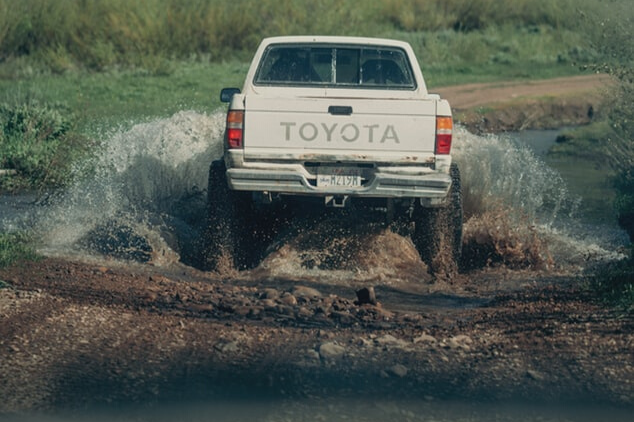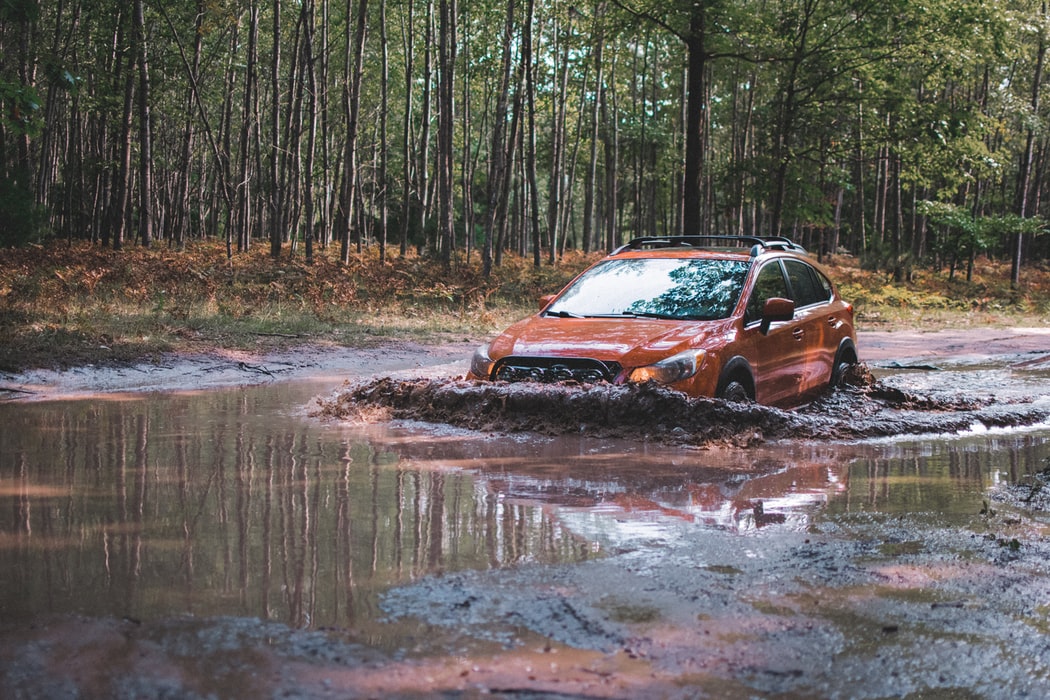For any great Aussie adventurer embarking on an all-terrain 4WD track, you’re likely to run into some bumpy roads and obstacles. One of the toughest obstacles you can come across is a water crossing and if you do, it’s important to know how to traverse safely to the other side. To help in the journey we’ve put together some of the main things you should know and prepare for your next 4WD water crossing.
Be Prepared
Though we have faith that once you’ve read this guide, you’ll be ready to tackle any obstacle you face, it’s always best to prepare for the worst – just in case. We recommend travelling in groups on any 4WD adventure and especially when attempting a water crossing. There’s safety in numbers and the more people you have on hand, the easier you can get yourself out of a jam.
Besides a few friends and a nice strong vehicle for towing/winching other essential recovery gear you should ensure to have on hand includes:
- Recovery tracks
- Tow hitch & shackles
- Drag chain kit
- Mounting kit
- Recovery straps/tow rope
- Extension straps
- Tree trunk protector
- Gloves
- Recovery damper
- Snatch block
It’s best to pack your own recovery kit and make sure you attach the essential items directly to your vehicle before crossing. This will save precious time should you get stuck partway across.
Let Your 4WD Breathe
If you know your vehicle well, you should know what kind of equipment it will require to attempt a water crossing. If you’re not sure, here are some of the basics you’ll need to protect your vehicle from drowning half-way across the waterway. Many adventurers swear by one or the other, but we say you can’t go wrong with both!
Snorkels:
Snorkels are designed to raise the level of air intake whilst your vehicle is submerged. This means your engine will continue to “breathe” from above even when below water level. Snorkels aren’t foolproof though so you should always ensure to use multiple forms of protection like a water bra.
Water bra:
Water bras are a quick and easy way to protect your vehicle. They create a barrier between the water and your engine and assist with creating the bow wave you’ll need as you make your way across. Simply attach to the front of your vehicle to prevent water from leaking into the engine bay. Alternatively, you can consider a tarp with some bungee cord as a makeshift water bra that can be used on and off for other purposes throughout your trip.
Check Your Tyre Pressure
Just as different terrains require different tyre pressures, so does water fording in your 4WD. Less pressure in your tyres provides a larger surface area and therefore longer and wider tread which provides more grip. Think about how easy it is to slip on a wet floor in bare feet, then consider how much less likely that is to happen in a pair of well-gripping shoes. The same applies to your tyres.
Make sure whatever pressure you choose will help you to get up the embankment on the other side.
It’s also important to consider what’s beneath the water when setting your tyre pressure. Check if the riverbed is muddy, sandy or rocky. If it’s muddy, take a bit of a dig and find out if it’s firm underneath or if it’s all slime as this will affect the type of pressure and traction you’ll need to get safely through. For a rocky bed, remember to choose a lower pressure so your tyres can conform to the abnormal shapes. Knowing what surface lays beneath the water is important for a number of reasons, which brings us to the next point…
Evaluate the Scene
Before you dive into the ford it’s vital that you do a proper review of the submerged and your surroundings. Take note of the depth of the water, first of all, to see if it’s a viable crossing point and if not, look for another way around/across. If the water is at a height that you’re able to pass through, make sure to note exactly how high it is because this will impact the type of equipment you need to ensure the safety of your vehicle (remember your snorkel).
It’s not just the height you need to worry about, river flow and submerged obstacles can also impact your journey, so you’re going to have to get down and dirty by wading into the water to investigate. Check for hidden traps such as immovable rocks, potholes and if possible, use markers so you can avoid these on your way across. If you’re travelling in far-north Queensland or the NT be aware of the potential of crocodiles. If you’re in croc country avoid walking through the water in your evaluation and maybe reconsider your crossing in general.
Slow and Steady
You’ve got the right gear, you’ve checked your surroundings and you’re good to go. The best approach to performing a water crossing in your 4WD is “slow and steady wins the race”. Remember the terrain you’ll be driving on through the water and how this will impact your potential speed. Keeping a consistent pace the whole way through is the best way to go, having hit the water with just enough force to create a bow-wave travelling ahead of you. This assists in providing less resistance as you travel and reduces the height of the water at your bonnet, helping to keep your engine as dry as possible.
You’ve Made It
Congratulations! You’ve successfully made it to the other side. While it may be tempting to take off into a victory lap, we recommend waiting for a bit to cool off and take care of your vehicle to prevent potential damage.



Keep the engine running while it dries out, the heat from the motor will assist with the process and help to prevent rust from residual moisture. A quick peak under the bonnet doesn’t go astray either. While you’re there, check for any debris that may have gotten lodged during the ride and remove it. Feel free to prop open your doors while you’re doing these checks to help disperse and water logged in the cabin.
Take some time to dry out your brakes to ensure they continue working throughout the rest of your journey. You can do this by squeezing them, a few solid presses on your brake pedal or a couple of short spurts of speed followed by solid breaking should do the trick. Basically just keep them moving to make sure you’re squeezing out any left over water.
Keep On Trucking
Following the guidelines above should help make your next water crossing a little bit easier, though if it’s your first time you may consider undertaking some proper 4WD training from an accredited provider. Check out some of your local 4WD clubs for recommendations.
Next time you tackle a water crossing in your 4WD why not send us your pictures?




Comments